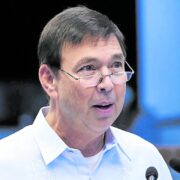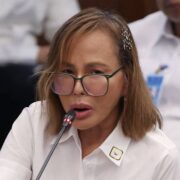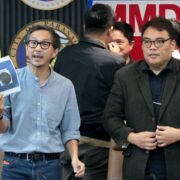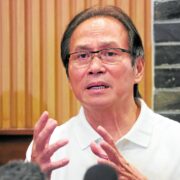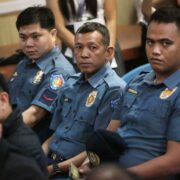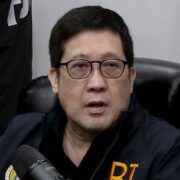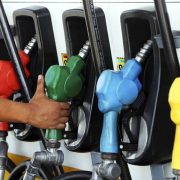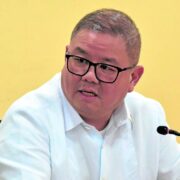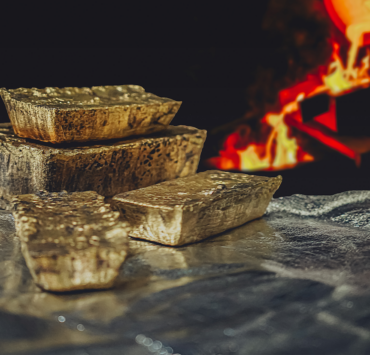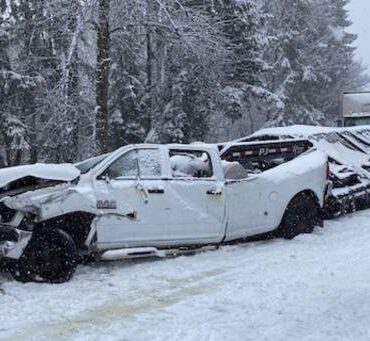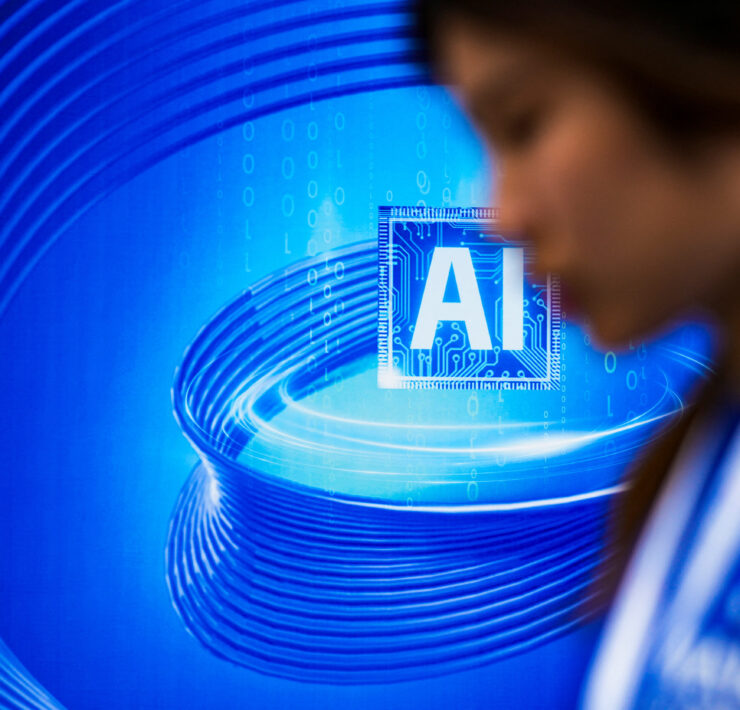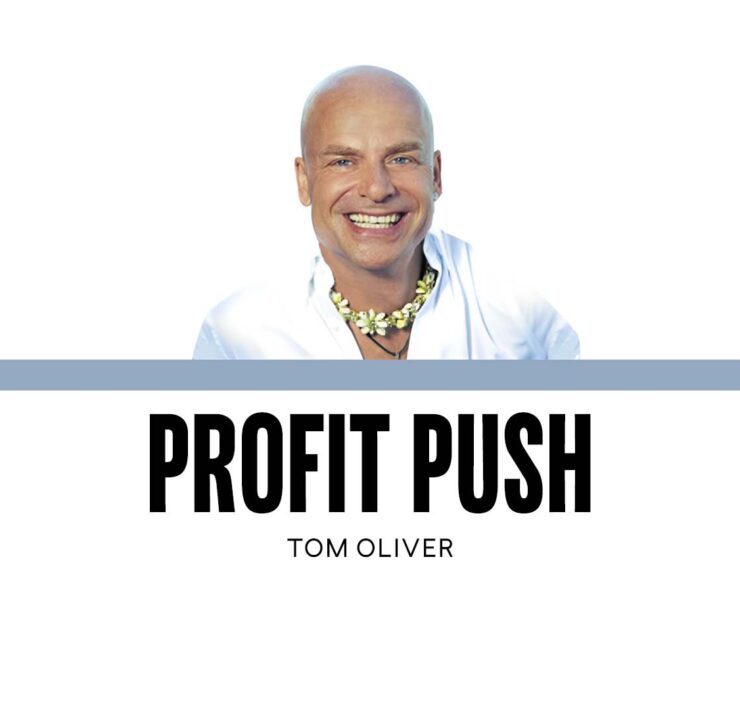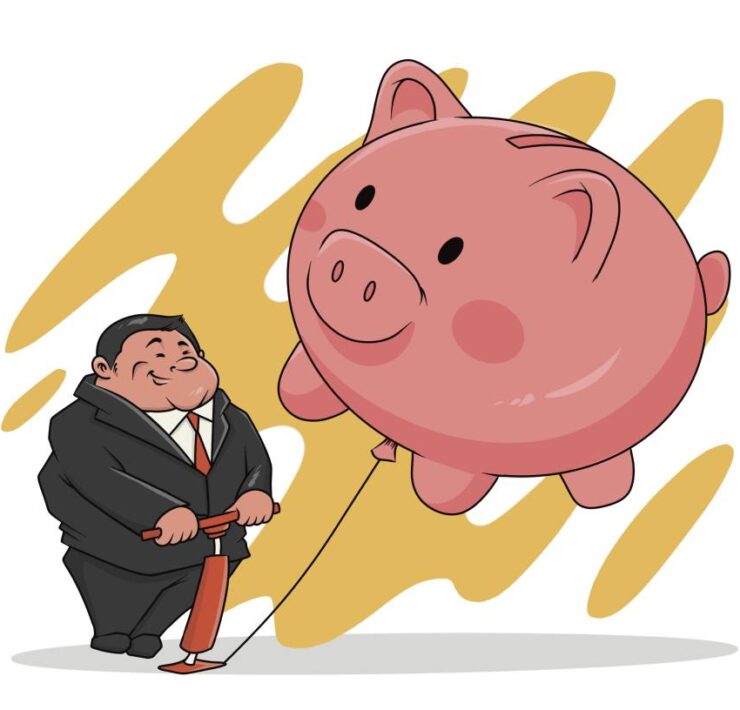What happens in Vegas: PH tech on global stage
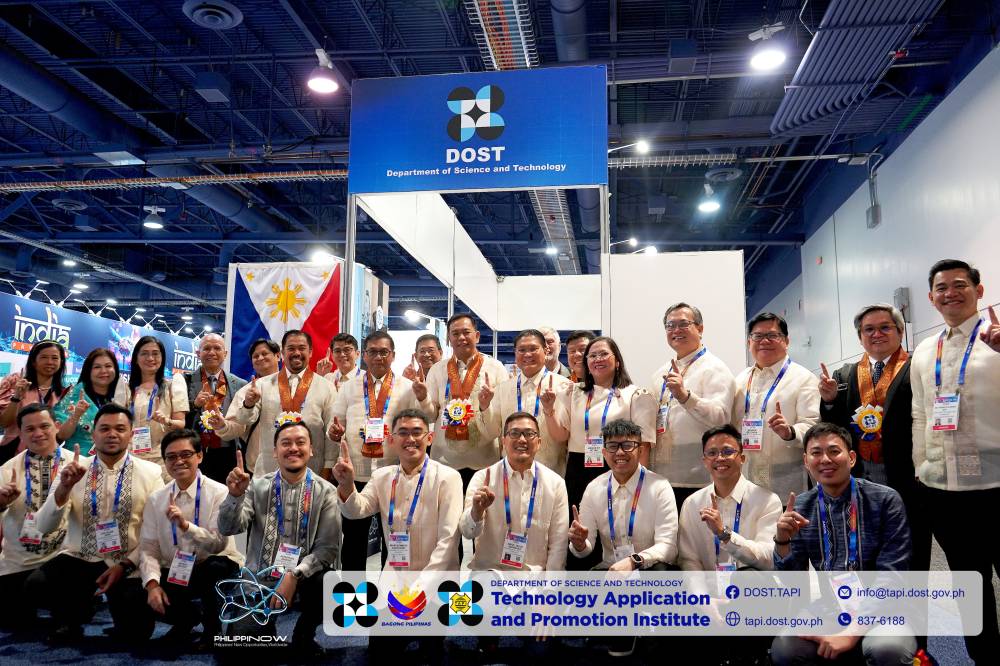
It can all happen in the so-called Sin City—a South Korean company suddenly wanting to order 120,000 units of adhesive and sealants, or the possibility of the water system in the city of Athens, Ohio, being enhanced with artificial intelligence (AI).
Just by being there in what has been billed as the “most powerful tech event in the world” can promising Filipino startups, along with technological innovations from government agencies and university researchers, be exposed to opportunities they never thought possible.
At the recent Consumer Electronics Show (CES) in Las Vegas, the Department of Science and Technology (DOST) brought a contingent that aimed to show the best of Filipino innovations that could solve real-world problems.
“Our goal is to showcase homegrown technologies that address global challenges, demonstrating how Philippine innovations are not only viable but also capable of providing tested and scalable solutions to industries and markets worldwide,” says Marion Ivy Decena, director of the DOST’s Technology Application and Promotion Institute (TAPI).
At the center stage of the trip to the CES last Jan. 7 to Jan. 10 are five startups, namely CHRG EV Technologies Inc., Hiraya Technology Solutions Inc., Usher Technologies Inc., Tekton Geometrix Inc. and Pili AdheSeal Inc.
CHRG showcased its Charging in Minutes or CharM, a technology for fast-charging electric vehicles; Usher brought its building structural health observation system, helpful for disaster risk reduction; and Tekton GeoMetrix presented monitoring technologies for seismology, geology and geophysics.
They were joined by delegates from Batangas State University and the DOST’s Industrial Technology Development Institute, Metals Industry Research and Development Center and Advanced Science and Technology Institute.
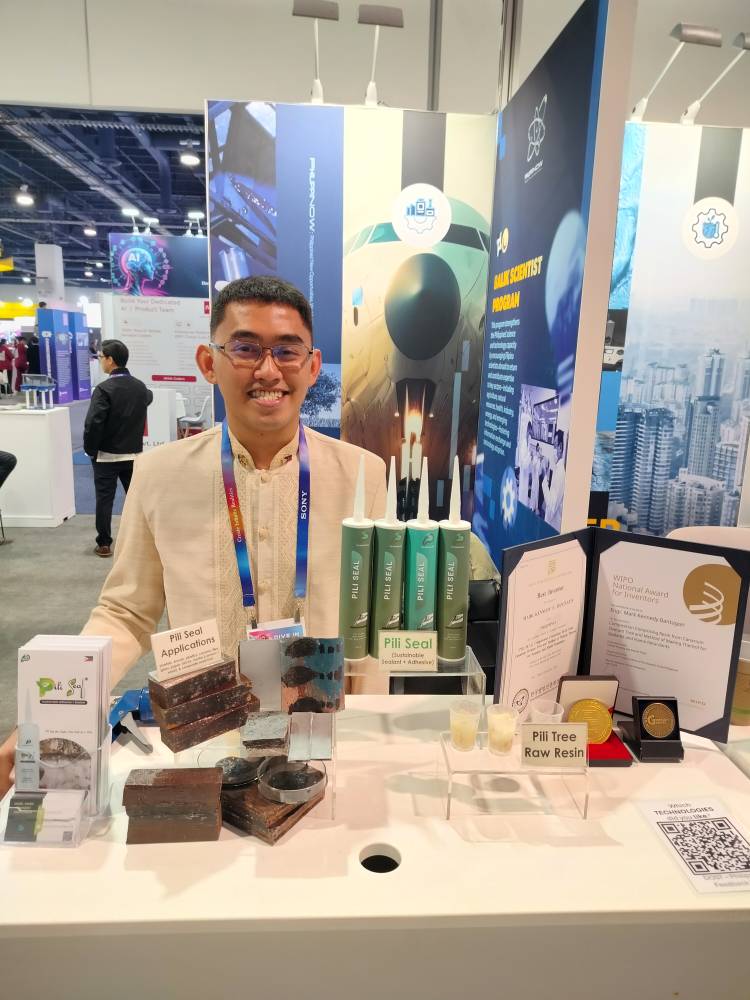
Sustainable sealant
One of the startup delegates was Mark Kennedy Bantugon, who in 2019 invented Pili Seal, a sealant made from the waste of the pili tree resin and geared for applications in the aviation industry. It was more sustainable than traditional sealants commercially available.
“What makes people interested in the product is its performance, and also because the natural smell of pili resin is fragrant,” Bantugon says in Filipino. “One of the usual comments [about] the product (aside from it being sustainable) is this is better; the commercial sealants smell like rubber.”
The invention bagged the James Dyson National award in the Philippines in 2021 and a slew of awards in the past years. During his postgraduate studies, he was able to develop the product into a two-in-one sealant and adhesive.
Bantugon is one of the cofounders of Pili AdheSeal Inc. As the product is being opened to different industries, they made sure that it was sustainable and could contribute to the circular economy.
“Aside from upcycling agricultural waste from the pili tree resin as our raw ingredients, after it [had been] utilized by our product, its residuals could be used into safe fertilizers. From the beginning of the process until the end life of the product, nothing goes to waste,” Bantugon explains.
The opportunity to be at the CES was an unexpected one. “Our product is not related to CES; even if I scroll through, it’s more on AI (artificial intelligence), electronic gadgets. We are far from it,” Bantugon narrates.
But all the cards fell into place, as the invention is already patented in the United States and Bantugon also happened to have a US visa. The trade show, Bantugon says, has now become more inclusive toward technologies and innovations that are not necessarily consumer-oriented.
“There has been many changes at the [CES] that it is not only an electronic-related show, but it has become a wide spectrum. It’s more on the sustainability, diversity and inclusivity of all the technologies. There I felt that I became part of this because it’s the right platform for [our product] that can address real-world issues and is aligned with the United Nations Sustainable Development Goals.”
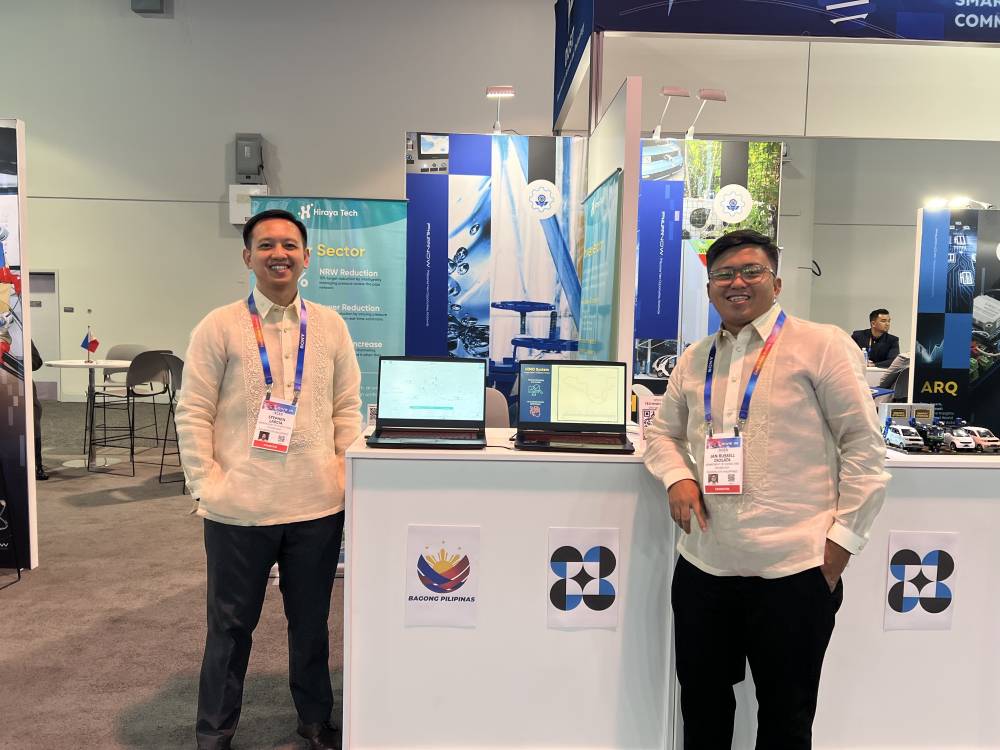
‘Outside the box’ solutions
Similarly, Jan Russell Diolata, head of technical operations at Hiraya Technology Solutions Inc., did not imagine himself going abroad to showcase Filipino innovations. “I am so happy because, personally, I grew up from a poor family, and I did not expect that I would travel to different countries because of this, that I would have a chance to go to the United States,” he says in Filipino.
Hiraya, from an old Filipino word for “imagine,” helps its clients imagine solutions, Diolata says. Originally catering to water distribution companies, Hiraya Tech proved that its solutions and system can work anywhere regarding the supply of fluid and its distribution—may it be water, oil, gas, air, electricity or even traffic flow.
“We will go to our clients; they will tell us their problems; we will help them imagine a solution, and that solution will always be outside the box— outside the box in terms of what technologies could we bring, could we integrate to Hiraya’s systems,” Diolata narrates.
At their centerpiece is AI-powered Hiraya Intelligent Modular Optimization or HIMO, which was derived from the Cebuano word for “make.” It is a semiautonomous system that could help power and optimize fluid distribution. “So what Hiraya could imagine, it will be HIMO that would carry it out.”
Many water distribution systems in different cities and municipalities in the Philippines now use Hiraya’s technology. Diolata observes that losses from nonrevenue water, or water that is lost en route to the consumers due to leaks or other reasons, could be tackled through HIMO. It can also lessen energy consumption, push water supply to previously hard-to-reach areas and protect water companies from pilferage.
At the CES, Hiraya’s technology was unique from those on offer, and that says a lot about Filipino ingenuity in solving problems, Diolata notes. “We are at par with other countries. Most of the other applications of AI (at the trade show) are more descriptive; it would suggest possible solutions, but it will still rest on an individual on what they would adjust in their system.”
“But Hiraya is more on autonomous control. It would be the one to come up with [how a system should operate]. It will predict and it will operate itself, then it will study the output of the operation to see what it could still improve on. It is self-learning. I did not see anything like that except in cars,” he explains.
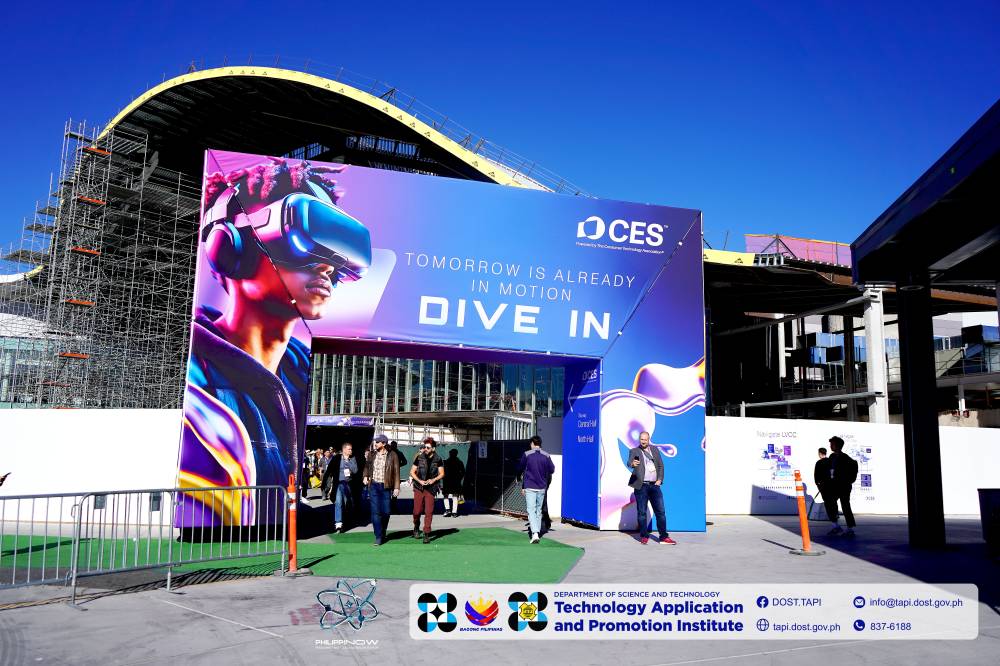
‘Tremendous opportunity’
These innovations may seem out of place at a consumer-oriented show such as CES, but the DOST sees it as a distinguishing point. “The DOST Philippines [delegation] distinguished itself through the presentation of unique technologies and innovations designed to address its own challenges and potentially offer solutions to other nations facing similar challenges,” says TAPI’s Decena.
More importantly, Decena adds, it was a tremendous opportunity for these startups to expand. “By leveraging the exposure, networking opportunities and feedback, they can accelerate their growth and achieve international recognition and success.”
And expand they did, based on high-value leads gained from the CES experience. Pili Adheseal’s Bantugon got that bulk order from a South Korean battery innovation company of 100,000 units for 2025 and additional 120,000 in 2026. Bantugon will return to New York soon to meet with another client.
“Even as an ‘unexpected’ delegate, I did not expect because my mindset was, ‘This is an electronic technology show, people would not flock to my booth.’ But surprisingly … our product had many inquiries. That’s when I realized that people today, business and companies, they’re all into sustainability.”
For Hiraya, there’s the potential of its solution being used by the water system in Athens, Ohio. Its leaders just finished follow-up meetings on this project and are in talks for potential partnerships with other local executives under the US National League of Cities.
“The Philippines is an archipelago. We are surrounded by bodies of water but not everyone has access to water. If we were able to solve problems here in our country using our AI software, what more in other countries that may only have small things to improve (in their water management systems) but there would still be a large impact if they use our system?” Diolata asks.
The trade show opened the doors for collaboration with global companies.
Science and Technology Secretary Renato Solidum, for instance, met with Karan Bhatia, head of government affairs and public policy at Google. Aside from capacity-building initiatives involving AI, Google discussed applicable technologies, such as pothole detection that could work with infrastructure projects, or hazard finder and disaster recovery tools that are handy in times of natural disasters.
“Both parties recognized opportunities for joint ventures to address real-world challenges through innovative solutions,” Decena comments.



